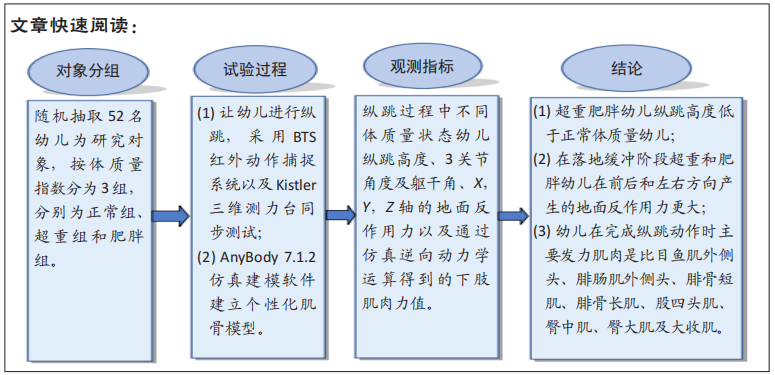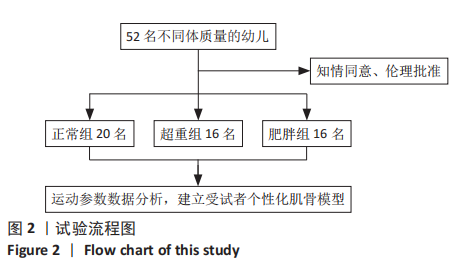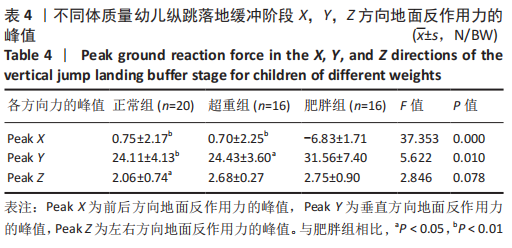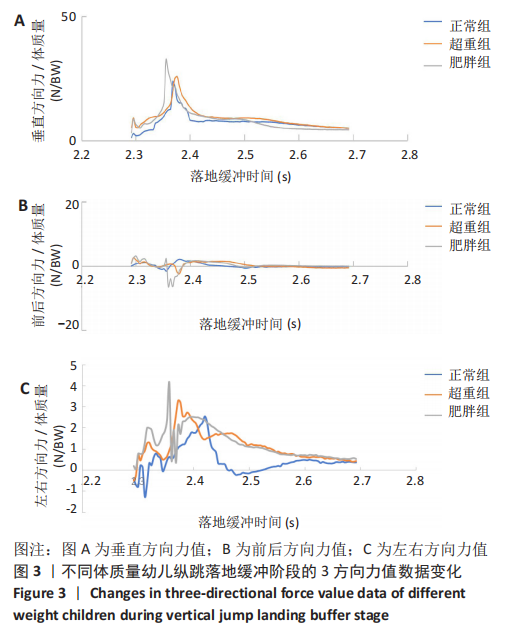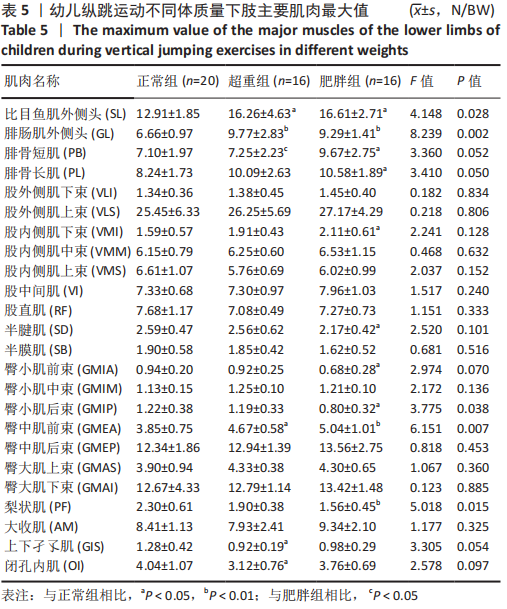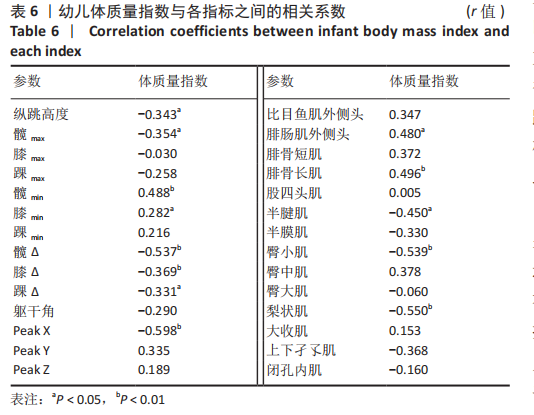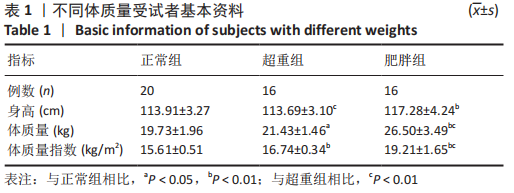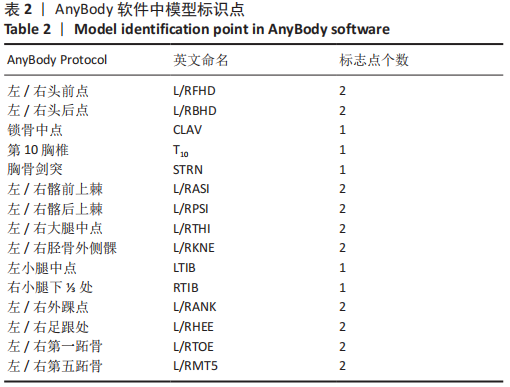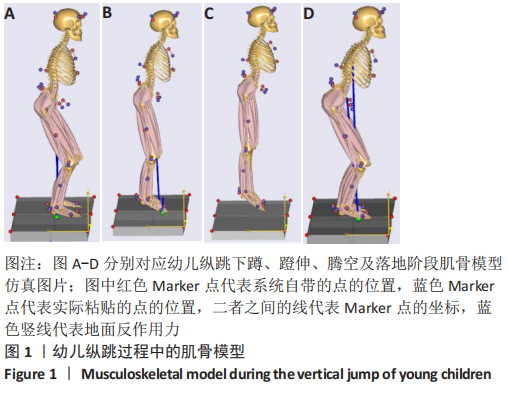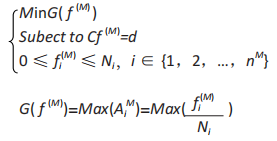[1] SANDERS RH, HAN A, BAKER JS, et al. Childhood obesity and its physical and psychological co-morbidities: a systematic review of Australian children and adolescents. Eur J Pediatr. 2015;174(6):715-746.
[2] SKINNER AC, SKELTON JA. Prevalence and trends in obesity and severe obesity among children in the United States, 1999-2012. JAMA pediatr. 2014;168(6):561-566.
[3] D’HONDT E, DEFORCHE B, DE BOURDEAUDHUIJ I, et al. Relationship between motor skill and body mass index in 5- to 10-year-old children. Adapt Phys Activ Q. 2009;26(1):21-37.
[4] WELLS JC, FEWTRELL MS, WILLIAMS JE, et al. Body composition in normal weight, overweight and obese children: matched case-control analyses of total and regional tissue masses, and body composition trends in relation to relative weight. Int J Obes (Lond). 2006;30(10):1506-1513.
[5] HAN A, FU A, COBLEY S, et al. Effectiveness of exercise intervention on improving fundamental movement skills and motor coordination in overweight/obese children and adolescents: a systematic review. J Sci Med Sport. 2018;21(1):89-102.
[6] D’HONDT E, DEFORCHE B, GENTIER I, et al. A longitudinal study of gross motor coordination and weight status in children. Obesity (Silver Spring). 2014;22(6):1505-1511.
[7] SIAHKOUHIAN M, MAHMOODI H, SALEHI M. Relationship between fundamental movement skills and body mass index in 7-To-8 yearold children. World Appl Sci J. 2011;15(9):1354-1360.
[8] COWLEY JC, MCCAW ST, LAURSON KR, et al. Children who are overweight display altered vertical jump kinematics and kinetics from children who are not overweight. Pediatr Exerc Sci. 2020;32(1):2-8.
[9] PAYNE G, 耿培新,梁国立.人类动作发展概论[M].北京:人民教育出版社,2008.
[10] ITI M, JAAN E, HELENA G, et al. Motor performance in 5-year-old preschool children with developmental speech and language disorders. Acta paediatrica (Oslo, Norway: 1992). 2009;98(8):1334-1338.
[11] SGRO F, NICOLOSI S, SCHEMBRI R, et al. Assessing vertical jump developmental levels in childhood using a low-cost motion capture approach. Percept Mot Skills. 2015;120(2):642-658.
[12] Chu A, Hughes RE. A method to determine whether a musculoskeletal model can resist arbitrary external loadings within a prescribed range. Comput Method Biomec. 2010;13(6):795-802.
[13] 李辉,宗心南,季成叶,等.中国2-18岁儿童青少年超重和肥胖筛查体质量指数界值点的研究[J].中华流行病学杂志,2010,31(6):616-620.
[14] 赵盼超,文蕊香,李嘉慧,等.幼儿不同跑步着地方式的生物力学特征[J].中国组织工程研究,2020,24(20):3209-3216.
[15] 刘沉.9-18岁儿童少年纵跳技能的运动学研究[J].中国体育科技, 2008,44(5):67-70.
[16] FLUIT R, ANDEESEN MS, VERDONSCHOT N, et al. Optimal inverse dynamic simulation of human gait. Gait Posture. 2014;39:S42.
[17] 刘述芝,胡志刚,张健.冲击载荷作用下运动员下肢动态响应的逆向动力学仿真[J].医用生物力学,2015,30(1):30-37.
[18] 陈瑱贤,王玲,李涤尘,等.全膝关节置换个体化患者右转步态的骨肌多体动力学仿真[J].医用生物力学,2015,30(5):397-403.
[19] 杨雨辰. 基于AnyBody的步态稳定性仿真分析及应用研究[D].天津:天津科技大学,2019.
[20] CLIFF DP, OKELY AD, MORGAN PJ, et al. Proficiency deficiency: mastery of fundamental movement skills and skill components in overweight and obese children. Obesity (Silver Spring). 2012;20(5):1024-1033.
[21] DUNCAN MJ, STANLEY M. Functional movement is negatively associated with weight status and positively associated with physical activity in british primary school children. J Obes. 2012;2012:1-5.
[22] DUNCAN MJ, STANLEY M, LEDDINGTON WS. The association between functional movement and overweight and obesity in British primary school children. BMC Sports Sci Med Rehabil. 2013;11(5):1-8.
[23] RAFFALT PC, ALKJAER T, SIMONSEN EB. Joint dynamics and intra-subject variability during countermovement jumps in children and adults. J Biomech. 2016;49(13):2968-2974.
[24] LI-I W, DER-CHIA L, CHENFU H. Age effect on jumping techniques and lower limb stiffness during vertical jump. Res Sports Med. 2004;12(3): 209-219.
[25] DOMIRE ZJ, CHALLIS JH. The influence of squat depth on maximal vertical jump performance. J Sports Sci. 2007;25(2):193-200.
[26] FLORÍA P, HARRISON AJ. The influence of range of motion versus application of force on vertical jump performance in prepubescent girls and adult females. Eur J Sport Sci. 2014;14(sup1):S197-204.
[27] CLARK JE, PHILLIPS SJ, PETERSEN R. Developmental stability in jumping. Dev Psychol. 1989;25(6):929-35.
[28] JENSEN JL, PHILLIPS SJ, CLARK JE. For young jumpers, differences are in the movement’s control, not its coordination. Res Q Exerc Sport. 1994;65(3):258-268.
[29] WELLS JC, FEWTRELL MS, WILLIAMS JE, et al. Body composition in normal weight, overweight and obese children: matched case-control analyses of total and regional tissue masses, and body composition trends in relation to relative weight. Int J Obes (Lond). 2006;30(10):1506-1513.
[30] WIKSTROM EA, TILLMAN MD, SCHENKER SM, et al. Jump-landing direction influences dynamic postural stability scores. J Sci Med Sport. 2008;11(2):106-111.
[31] VILLARRASA-SAPINA I, ALVAREZ-PITTI J, CABEZA RUIZ-R, et al. Relationship between body composition and postural control in prepubertal overweight/obese children: a cross-sectional study. Clin Biomech (Bristol, Avon). 2018;52:1-6.
[32] FUKUZUMI A, TAKEHARA S, HASE K, et al. Muscle activity analysis in vertical jump by direct dynamics simulation with musculo-skeletal model. Japan Society of Mechanical Engineers. 2011. doI:10.1299/kikaic.77.1686
[33] YAHYA U, AROSHA SENANAYAKE SMN, NAIM AG. A database-driven neural computing framework for classification of vertical jump patterns of healthy female netballers using 3D kinematics–EMG features. Neural Comput Appl. 2020;32(5):1481-1500.
[34] ABDELMOULA A, MARTIN V, BOUCHANT A, et al. Knee extension strength in obese and nonobese male adolescents. Appl Physiol Nutr Metab. 2012;37(2):269-275.
[35] TOMLINSON D J, ERSKINE RM, MORSE CI, et al. The impact of obesity on skeletal muscle strength and structure through adolescence to old age. Biogerontology. 2016;17(3):467-483.
[36] 徐亮亮,刘欣,王梅.低体质量、超重对幼儿身体素质的影响[J].中国体育科技,2015,51(1):127-131.
(责任编辑:WJ,ZN,ZH)
|
